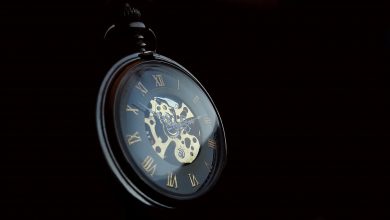Natural Ways to Relieve Sinus Pressure, Pain, and Nasal Congestion

Sinuses are air-filled spaces on the cheeks, forehead and behind the eyebrows, on both sides of the bridge of the nose, and at the back of the nose. They can get clogged easily. Healthy sinuses are lined with a thin layer of mucus that traps dust, germs, and other airborne particles. Ideally, small hair-like ciliary structures or cilia allow mucus and whatever is trapped inside to travel out of the sinuses, into the back of the throat and into the stomach.
What Causes Sinus Problems?
Nasal congestion and sinus pressure have many causes. Swelling and inflammation of the membranes covering the inside of the nose and sinus cavities can cause pain and a feeling of fullness on the face, cheeks, cheekbones, forehead and around the eyes, teeth, head. The pain may become worse when the person bends over. The swelling of the membranes prevents the sinuses from draining properly. A change in temperature, a cold, just about anything that causes swelling and increased mucus in the sinuses or prevents the cilia from sweeping up can cause problems. Lifestyle factors such as smoking and traveling frequently can also play a role in sinus congestion and pain. Cigarette and cigar smoke can irritate the sinuses and cause inflammation.
Below are some tips for feeling better and breathing easier in case of sinus congestion.
Humid Air Should Be Breathed
Sinus congestion can be the result of dry air, which is very common in winter. If the mucus, which prevents the drainage of the sinuses and traps bacteria, viruses and some particles in the breathing air, thickens, it can form dry crusts in the nose and sinus passages. Increasing humidity and taking in more fluids can help thin the mucus and regain mobility. A room humidifier should be available in the bedroom or other rooms where a lot of time is spent, which can help restore moisture to the air, and the sinuses should be moistened. The room humidifier should be cleaned well to prevent allergies caused by fungi. Dry air can irritate the sinuses, but keeping the air moist and inhaling steam two to four times a day can also help reduce congestion. While in any room in the house, the steam from a bowl filled with medium temperature water can be inhaled. For this, the steam can be directed towards the face and a towel can be covered over the head. Taking a hot bath and sitting in the bathroom with the door closed and the shower open can also help drain mucus and relieve pain and congestion.
Avoid Smoke
Inhaled air can clog the sinuses and cause pain, depending on what it carries. Strong odors such as harsh cleaning products, dyes, hair sprays, perfume and cologne, and above all, cigarette smoke can irritate the sinuses. Smoking should not be allowed in the home environment, odorless, environmentally friendly cleaning products should be preferred. These products are less likely to contain harsh chemicals that can trigger sinus pressure and pain.
More Water Should Be Drinked
Drinking fluids such as more water or juice, a cup of hot tea or soup will help thin the mucus and encourage drainage. Drinks containing caffeine or alcohol should be avoided as they can dehydrate you. Alcohol can also make the swelling of the sinuses and nasal lining worse. It should be aimed to drink eight glasses or 2-2.5 liters of water or other healthy beverages every day.
Nasal Lavage Must Be Done, Sinuses Washed
A mild, sterile saline solution (saline) can be used to clear blocking mucus and allergens. Salt water washing, also called nasal washing, is the easiest way to clear the sinuses and nose, keep it clear, and prevent or relieve pain caused by sinus congestion. During administration, leaning over the sink, the solution is squeezed or sprayed into one nostril, allowing it to pass through the nasal cavity and out through the other nostril. The mouth is kept open and no breathing through the nose.
Bottles that can be used for nasal lavage, a syringe or syringe, a pump sprayer, and a nasal wash container called a neti container are available at most pharmacies. A container filled with saline solution can be purchased beforehand, or the brine can be prepared at home. To make it at home, one teaspoon of salt (non-iodized) should be added to about half a liter of warm sterile water and mixed. If tap water is to be used, it should be boiled for 1 minute or more and cooled. Half a teaspoon of baking soda can be added to relieve the bitterness of salt. Salt water is filled into the injector (without a needle at the tip) and the piston is pushed into the depth of one of the nostrils, allowing the salt water to go towards the nasal passage and exit through the other nostril. The same can be done with a pump sprayer or with neti pots available from pharmacies and made for the job. All instruments used for nasal washing should be washed with plenty of water after each use and left to dry in the open air.
Hot and Cold Compresses Can Be Applied to the Face
Placing a warm, moist towel around the nose, cheeks, and eyes helps loosen secretions in the airways. Cold and hot compresses can be used alternately, which can relieve sinus pain and pressure, congestion. It can be started by placing a warm, damp towel or washcloth on the sinuses for approximately 3 minutes. A cold compress can then be applied to the sinuses for 30 seconds. It can be applied alternately two more times and the treatment can be repeated 4 times a day.
Sleeping with Head High May Relieve
A slightly high pillow can be used when sleeping at night. Keeping the head elevated can help drain the sinuses and reduce congestion, making breathing more comfortable.
Diet Can Be Colorized With Spicy Foods
Many people find that pepper, cayenne mustard, or another spicy hot food opens up their nasal passages and provides some relief from sinus pain and pressure. Some evidence suggests that capsaicin, the active ingredient in cayenne pepper, may help relieve some types of pain. If it suits the palate and does not upset the stomach, spicy, bitter foods can be included in the diet to help with sinus discomfort.
Humming a Song Can Relieve Sinus Pain
According to the reports of some people, humming a song for about an hour can relieve sinus congestion or pain. Some researchers in Sweden have found that humming can keep the sinuses clear. Humming causes both increased airflow in the sinuses and increased nitric oxide levels, and the combination of the two can reduce the risk of sinusitis or sinus congestion. Therefore, those who have a cold or are allergic and want to prevent a sinus infection can try humming a little bit of a melody they like.
Sinus Pain Can Be Relief With Mind-Body Connection
Some techniques that make use of the mind-body connection, such as deep breathing and relaxation practices (meditation, biofeedback, yoga, and hypnotherapy), can be effective in relieving sinus pain. These practices affect the mind’s perception of pain and are especially useful in relieving pressure in the sinuses and chronic pain.
Non-Prescription Medicines Available
The medications listed below do not need a prescription and can help relieve sinus symptoms.
Decongestants: Over-the-counter decongestants reduce blood flow to the sinus and intranasal membranes and relieve swelling and congestion. Thus, the nasal passages are opened, and the pain and pressure in the sinuses and head can be reduced. Decongestants are available in the form of nasal sprays or pills. These should be used with care and the instructions should be followed. An oral decongestant should not be used for more than a week without consulting a doctor. Using decongestant nasal sprays for more than 3 days can worsen congestion and raise blood pressure. For this reason, if there is any health problem or if other drugs are used, the doctor should be consulted first. Children under the age of four should never be given a decongestant or any over-the-counter medication.
Antihistamines: If allergies are behind nasal congestion and sinus pressure, controlling them will relieve symptoms. Multi-symptom medications can also be used for congestion and sinus pressure, including a decongestant, along with an antihistamine that can help prevent a runny nose and sneezing. Antihistamines can cause drowsiness. Medication labels should be read and followed, and in case of questions, the doctor or pharmacist should be consulted.
Steroid nasal sprays: These can help with allergy congestion. If it is necessary to use such sprays, which can be purchased without a prescription, the doctor should be consulted. Its effects can last for several days, so it should be started before symptoms appear and used during allergy season.
Menthol: Medicated ointments that contain menthol or camphor can help with better breathing. It can be applied to the chest or upper lip. You can also purchase types that are placed in warm water and inhaled, which helps open the airways.
Pain relievers: Although pain relievers such as acetaminophen, ibuprofen, and naproxen do not relieve congestion, they can relieve pain caused by sinus pressure. Dose instructions on the label should be observed and followed.
Boundaries Must Be Known
When applying natural ways to relieve sinus pain, care should be taken because it is important how much and how long they are used. People with symptoms such as persistent fever or stiff neck, pain lasting more than a day, confusion, numbness, tingling, weakness, persistent nausea or vomiting, green or yellow mucus discharge should not attempt to cure sinus pain on their own. These symptoms may be a sign of a serious infection in the sinuses that may require antibiotics. If you have a cold, mild chronic pain or headache caused by allergies, it is good to use simple methods that can be applied at home and some over-the-counter medications, but if there is severe pain that does not respond to the applications, nasal congestion and sinus pressure that persists for more than 7 days, a specialist should be consulted. . If the symptoms are severe, the interview should be earlier.





